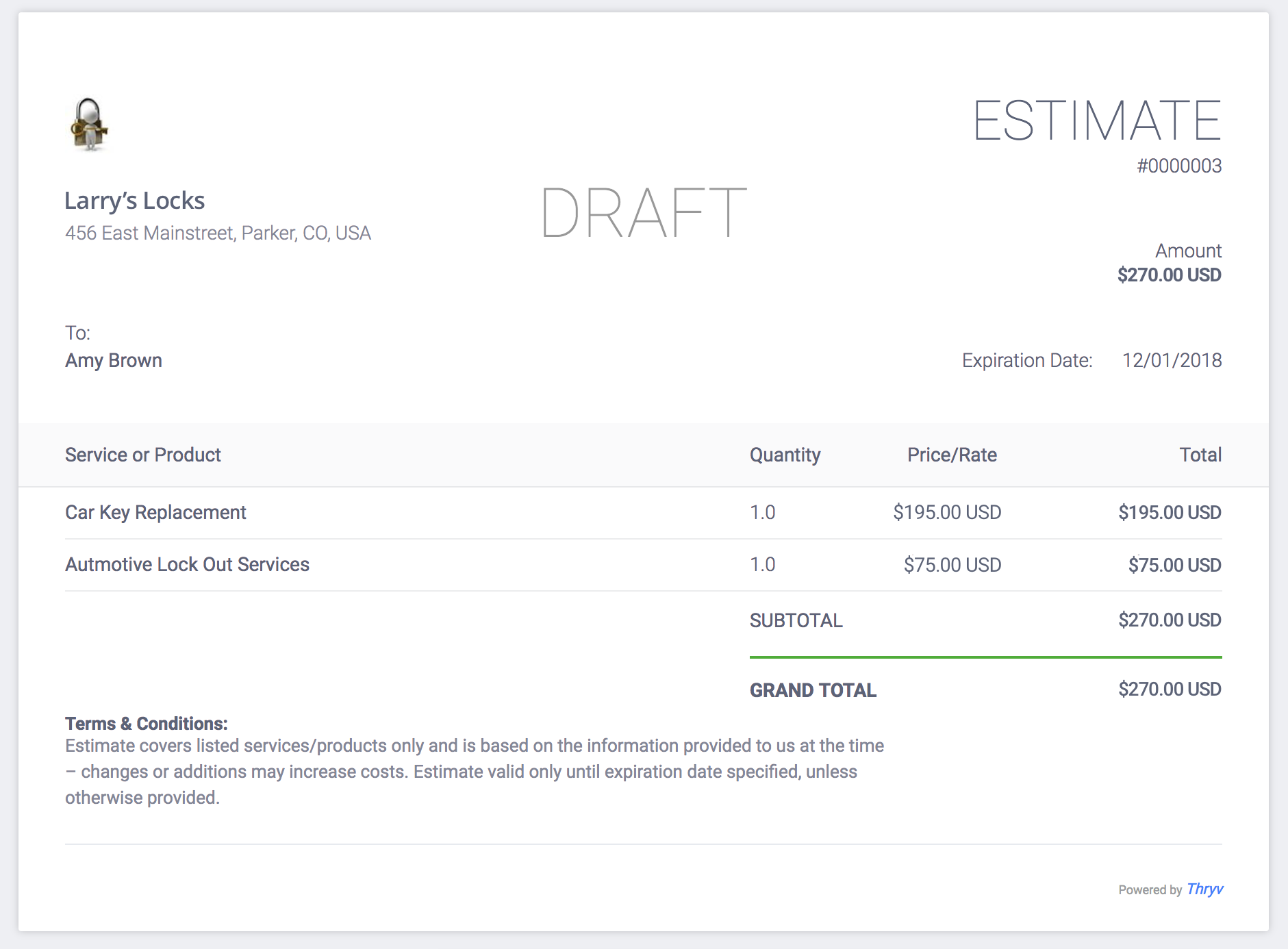If you run a service-based business, you endure plenty of nerve-wracking moments on the job. Perhaps you get a little nervous about your first day on a new job site, or maybe you feel a tad tense when you send that final invoice and wonder just how long it’s going to take to get paid. (Too long—always too long!)
But you can’t experience any of those moments without winning the job in the first place.
For many service-based business owners, the most nerve-wracking moment of all is the one where you tell a prospect or potential client how much you plan to charge them, and then you…wait.
And wait.
After hours of agonizing over how much to you think you should charge, itemizing (or choosing not to) exactly what you expect a prospect to pay for, and building that initial quote or estimate, you’re left with nothing but a waiting game.
You ask yourself:
- Will they like my quote enough to hire me?
- How does my quote compare to the competition?
- Did I overcharge?
- Did I undercharge?
- How long will it take for them to make a decision to move forward?
Not every quote you build is created equal. Customers likely have differing expectations for your business and, as such, you should treat them differently from one another. That goes for how you build their quotes, as well.
Successful quotes and estimates have these 6 traits in common.
1. Prepared with Care
You only get one chance to make a good first impression. And a poorly prepared quote or estimate can scare away a prospect.
Ask the right questions before you deliver a quote, not afterward. That’s because the more you know in advance, the better you can build a custom quote or estimate that fits your prospect’s expectations.
Then, double-check the details once you think you’re done. How’s your spelling? Is the client’s name, address, and contact information correct?
Attention to detail can make a quote that otherwise appears sloppy or messily prepared look much more professional.
2. Promptly Delivered
The first one on the job wins the job, right?
Sometimes.
What if a prospect is comparing a few different vendors or businesses? In that case, the first one to deliver a compelling quote is the one who wins the job.
Make it your goal to deliver quotes and estimates within 24 hours of your consultations. Better yet, do so from your computer or a mobile device immediately after a consultation. If they get a quote they’re happy with while they’re still excited about you, your promptness could earn you their business.
3. Personalized
Including a client’s name and personal details in a quote can go a long way in helping you stand out from the crowd. (We touched on this earlier.)
How else can you personalize your quotes and estimates?
Take note of unique details or requests during your initial conversations with prospects. Then, when pricing out specific aspects of your service, find ways to incorporate these details.
Want to go the extra mile? Adjust the name of one of your services to match a special request, or simply include a note reiterating some of the things you talked about.
4. Polished
Great estimates aren’t just professionally delivered, they look professional too. They look polished.
We advise against handwritten quotes and estimates. Even if you have a casual business relationship with someone, or you’re a mom-and-pop shop, a scribbled quote on the back of an envelope doesn’t showcase your professionalism or the quality of work you deliver.
Instead, use printed, or better yet—digital—estimates.
- Choose a layout that’s not overly cluttered. Your layout should be so neat and clean that your quotes are easy to navigate and understand.
- Place your logo somewhere conspicuous, but not anywhere that detracts from the meat and potatoes of your quote.
- Avoid anything overly colorful, and try to keep the quote to one page.
- Replace industry jargon and unfamiliar acronyms with terms anyone could understand.
- Eliminate any confusing price structures or calculations that require additional math.
5. Precise
Large, lump sum estimates that include one “total” price without much explanation can be scary. That unexplained sticker shock can be really tough for prospects to overcome.
Even though it takes longer to do, itemize your estimates. Doing so will make consumers feel as though every penny they’d spend with you will be allocated to something important (and that there aren’t hidden markups or profits you’re trying to bury within the quote).
6. Persuasive
The last thing your quotes and estimates need to be is persuasive. Hopefully you lay the groundwork during your initial consultation or sales pitch. Then, it’s your estimate’s job to seal the deal with persuasive terms or offers.
Persuasive offer ideas:
- Dollars ($) off for first-time or returning customers
- Percentages (%) off if they pay by cash instead of by card
- Incentives for booking within a certain time frame
- Additional free or complimentary services
- A warranty or a guarantee on your work
- Referral incentives when they bring you new business
If your work comes with any or all of these already, it doesn’t matter. Call them out in your estimate anyway! Seeing an offer in writing can make it seem more tangible.
The most compelling estimates are also time-sensitive. Because when you add a deadline to something, even if the deadline is practically irrelevant to you, you can create urgency for your prospective client that causes them to act.
Stop building quotes and estimates from scratch.
Building quotes and estimates from scratch can be a chore.
The best payment processing systems come with quote and estimate templates that deliver a polished appearance without having to build them yourself.
Here’s what Thryv’s estimates look like:
 Explore Thryv’s payment communication and processing software.
Explore Thryv’s payment communication and processing software.






